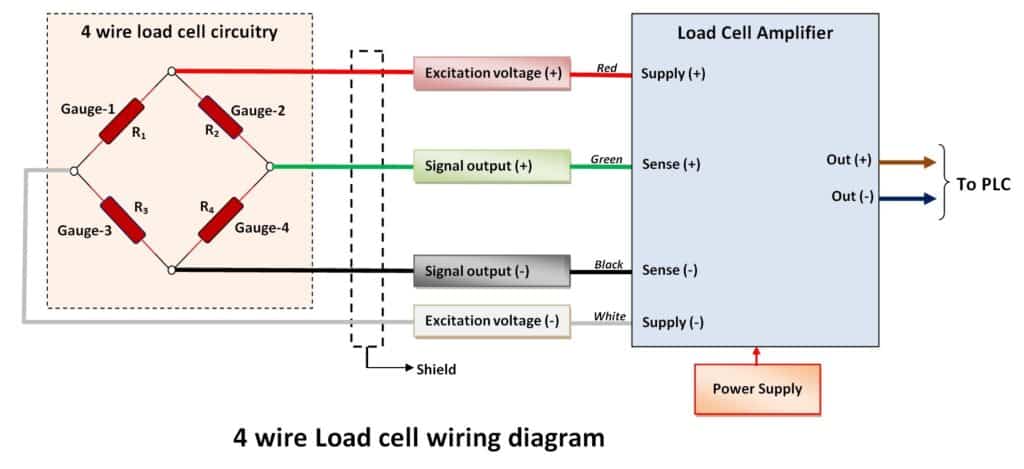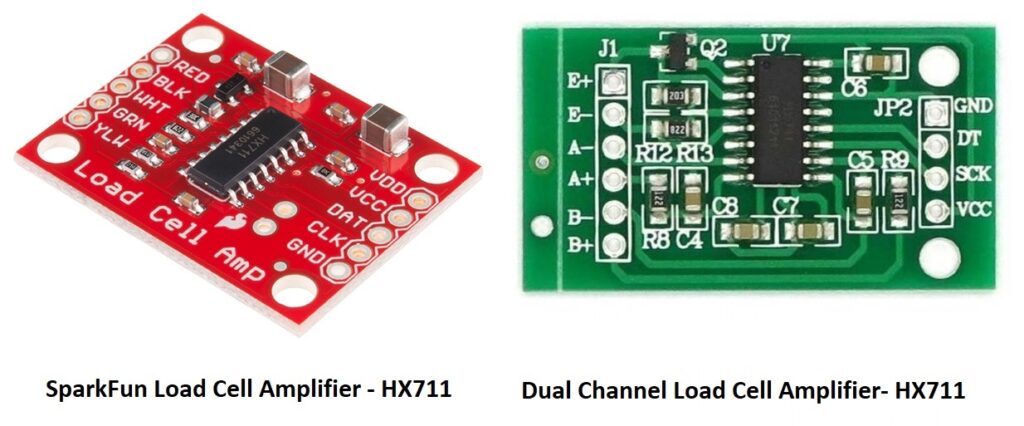Table of Contents
Introduction-
Here we will show how load cell connection and wiring can be done. A Load cell is a force transducer which converts forces such as tension, compression, pressure, toque, weight etc. into an electrical signal that can be used to measure such forces. Or simply it is used for the measurement of different types of forces as mentioned. The main purpose of load cell sensor is measure weight or to check amount of load transferred.” A simple load cell diagram is shown below-

Among all types of load cell, strain gauge load cells are the most popular and widely used in industries because they operates through producing changes in electrical resistance in strain gauge, when load is applied. In general, 4 strain gauges are utilized to detect load, force, weight or pressure and arranged in wheat stone bridge arms as shown in figure-





Load cell wiring-
There are several configurations for load cell wiring and connection with amplifier, display devices and other interface. Some of them are as follows-
- 4 wire load cell connections
- 6 wire load cell wiring diagram
- 3 wire load cell wiring diagram
Note- 4 wire load cell are most commonly used.
4 wire load cell connections-
A wiring diagram of 4 wire load cell with color code is shown below-
6 wire load cell wiring diagram-
A wiring diagram of 6 wire load cell (of Zemic manufacturer) with color code is shown below-
3 wire load cell wiring diagram-
A wiring diagram of 3 wire load cell with color code is shown below-
Load cell amplifier-
A load cell amplifier is such device which is used to increase signal strength output from load cell. In most of the load cell, signal produced is low strength i.e. in the range of mV. That may not compatible with measuring system like a data logger, load meter. So we need to convert mV signal into more powerful signals like (4-20) mA, (0-10) VDC, (1 to 5) VDC, RS232, RS485, and USB etc. The load cell amplifier resolves this issue by amplifying and signal conditioning of the signal. An example of such device is HX711 amplifier as shown in figure-
Arduino uno-
The Arduino UNO is basically an open source microcontroller and standard board of Arduino. The board is based on the Microchip ATmega328P microcontroller. It is developed by Arduino.cc. The board contains sets of digital and analog input/output (I/O) pins to interface various expansion boards (shields) and other circuits. It has 14 digital I/O pins (six capable of PWM output), 6 analog I/O pins, and can be programmed with the Arduino IDE using type B USB cable. An interface of one load cell with amplifier as well as microcontroller board arduino uno is shown below-
To read more about other related topics click on individual links here-
- Load Cell Types
- Digital Load cell
- Load Cell Manufacturers
- Arduino UNO (Wikipedia link)
- What is strain gauge?
- Types of strain gauges
- What is Gauge Factor?
- Pressure Gauge Parts
- इलेक्ट्रिकल ट्रांसड्यूसर | Electrical Transducer in hindi




